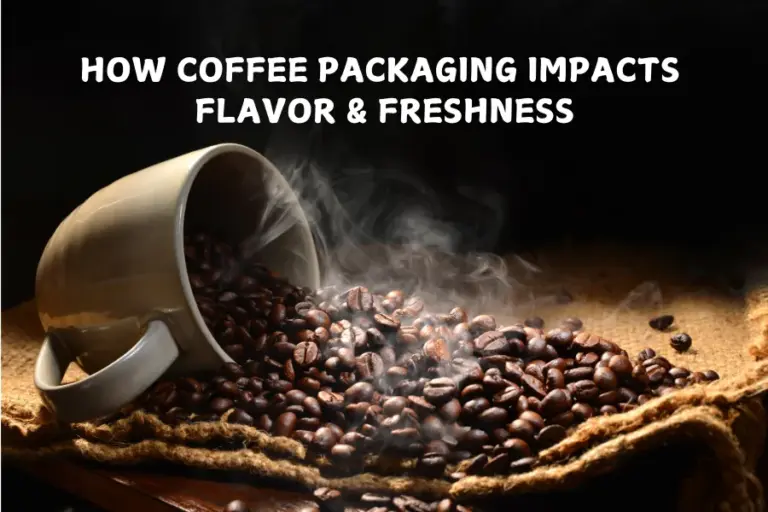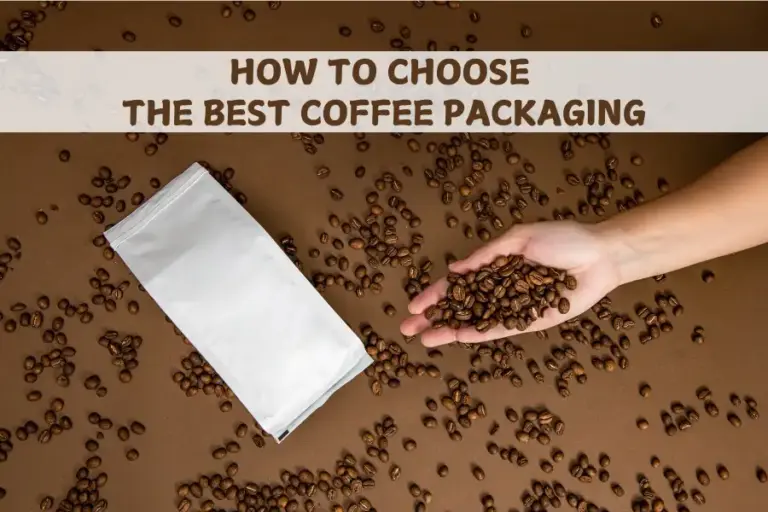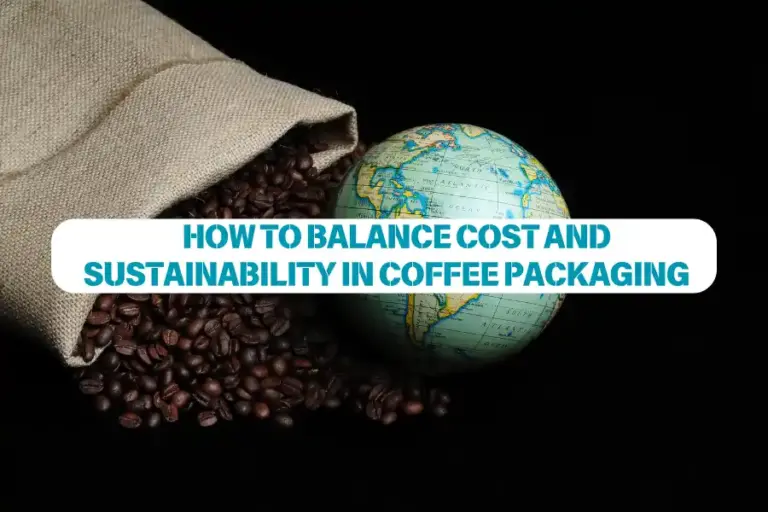Biodegradable vs Recyclable Coffee Packaging: Which Is Better?
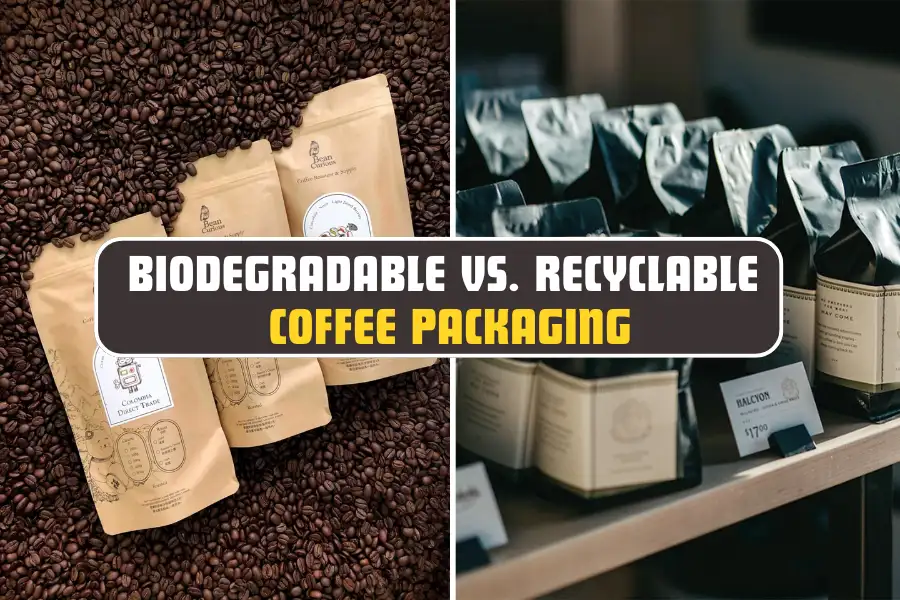
When enjoying your favorite coffee, have you ever thought about its packaging? What will happen to them after that? When we tend to shift towards more sustainable living, package always is the hot topic. According to Our World In Data, packaging accounts for 40% of all plastic waste worldwide. Then, Biodegradable vs Recyclable coffee packaging: Which is better for our planet?
We will explore useful information about each of those packaging. We will also learn about their benefits as well as challenges coming along. From that, you’ll know which will be the greater choice for your coffee habit. And now, let’s brew some knowledge together!
Materials Used to Make Coffee Bags
Coffee bags can be made from a variety of materials. Each coffee packaging impacts the flavor and freshness at different levels. Kraft paper, plastic, and laminate are some of the most common materials you can know.
Kraft paper is an eco-friendly coffee packaging but lacks durability and moisture resistance. Plastic ( (such as PE-polyethylene, and PP-polypropylene) is cost-effective and lightweight but often non-biodegradable. Laminate provides optimal coffee shelf-life and freshness for coffee by combining paper, plastic, and aluminum. Yet, laminate bags are difficult to recycle because they need to separate those layers first.
What Is Biodegradable Coffee Packaging?
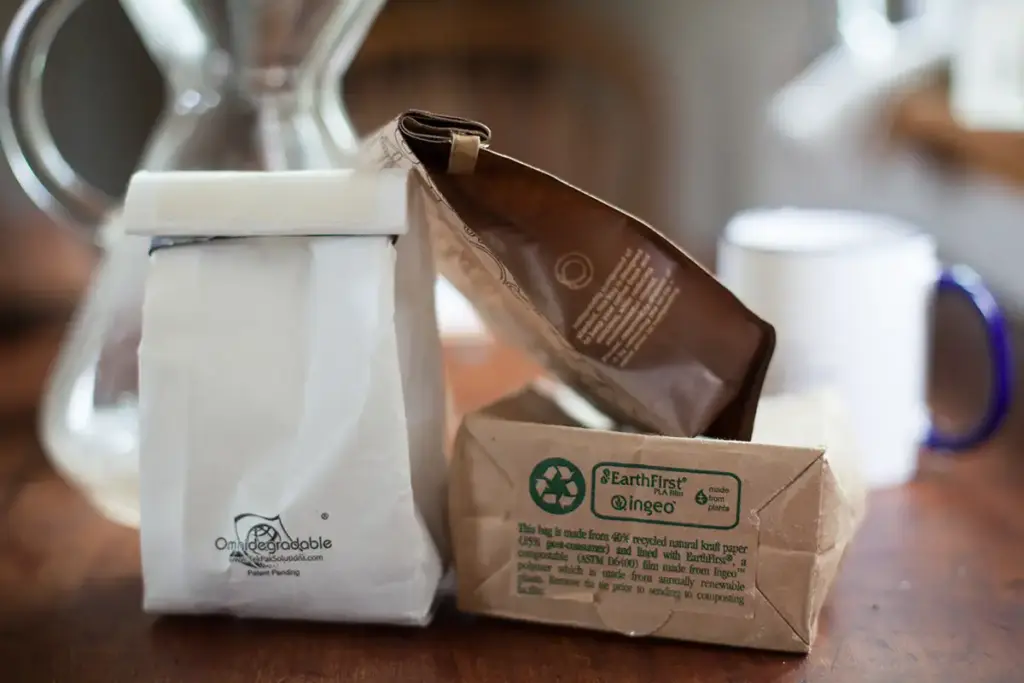
Biodegradable coffee packaging is made from plant-based materials. They can decompose naturally into non-toxic small elements, like water, carbon dioxide, and other natural compounds. This process can happen with the help of microorganisms like bacteria and fungi. Corn starch, compostable polymers, woodchips, and cellulose are some typical plant materials to make biodegradable packaging.
This eco-friendly coffee packaging can degrade within months in the right conditions. And the time will fluctuate depending on the conditions and kinds of packaging. But, plastic packaging can take up to hundreds of years to decompose completely. That’s why biodegradable packaging may be the best choice to protect the environment.
Benefits of Biodegradable Coffee Packaging
Many people choose biodegradable coffee packaging for many reasons. Below are some main advantages that this kind of packaging will bring:
Easier to Dispose
As discussed above, it takes up to 6 months for biodegradable packaging to degrade. We can place them into the regular trash. We can place them into the regular trash. Then, they all will be moved to a landfill or converted into energy, such as biogas which can be transformed into biofuel later.
Reduce Waste in landfills
Biodegradable packaging is designed to degrade naturally and leave no harmful residue. Thus, this will contribute to decreasing the waste amount in traditional landfills.
Reduced Carbon Footprint
Many biodegradable materials are plant-based (such as orange peel). And the fossil fuel consumption during production is minimal. Thus, biodegradable packaging may be your sustainable choice.
Appeals to Eco-Conscious Consumers
Companies use biodegradable packaging to show their concern for protecting the environment. Then, this strategy can attract more customers to use their products.
Challenges of Biodegradable Coffee Packaging
Biodegradable coffee packaging has its disadvantages that you should be informed.
Need Specific Conditions To Degrade
Not all biodegradable coffee packaging can be compostable at home. Without suitable conditions, it can take even years for it to decompose completely. Many biodegradable packaging needs certain composting requirements to decompose. They need industrial composting facilities to compost properly. This means that regular landfills may not help biodegradable materials to degrade in the right way. In this case, biodegradable packaging may not be as friendly to the environment as it should be.
More Expensive Than Traditional Packaging
It can be more expensive to produce biodegradable materials, compared to conventional plastics. Thus, small businesses can find this kind of package a less accessible option.
Risks of Negative Impact On the Ecosystem
Not all kinds of biodegradable materials are environmentally friendly. For example, plastic bags when broken down will be turned into microplastics. These particles can harm wildlife or even our food chain.
Affect The Coffee Flavor
Biodegradable materials may have a shorter shelf life than standard packaging, which can affect the freshness of coffee.
What Is Recyclable Coffee Packaging?
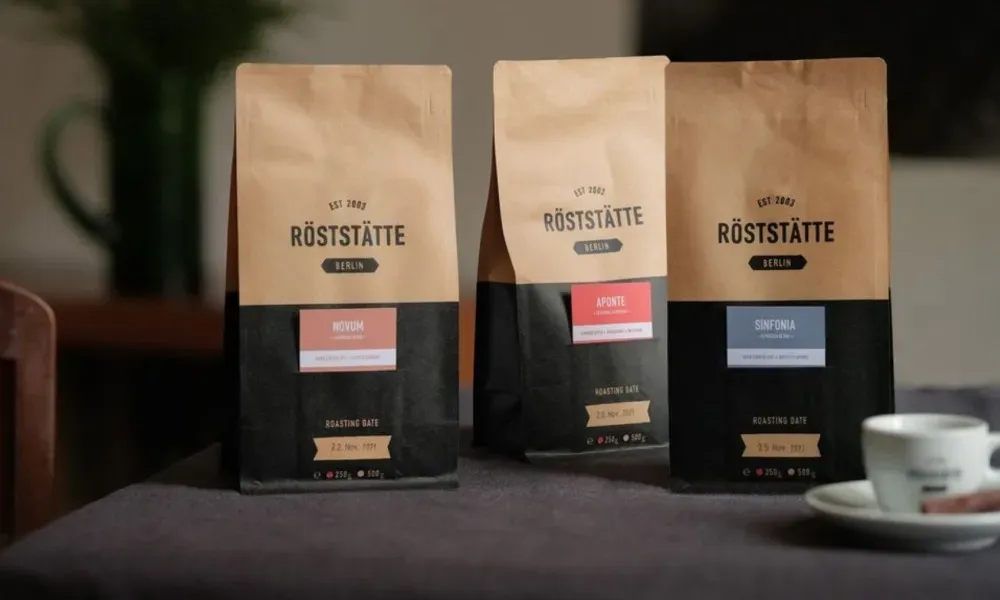
Unlike biodegradable ones, recyclable packaging is collected, processed, and reused to make new items. Thus, it can help to reduce raw material extraction since we use the used one for a second life. Thus, recyclable coffee bags will lower waste as well as conserve resources. That’s why we’re encouraged to sort the waste correctly to be sent to recycling centers later.
Benefits of Recyclable Coffee Packaging
Recyclable packaging brings many benefits than you can think. Let’s see what makes people prefer this packaging:
Promote Circular Economy
Recyclable materials decrease the demand for new resources to make new products. Aluminum is a great example because it can be recycled so many times without decomposing.
Lower Landfill Contributions
Recycled packaging does not contribute to the traditional landfills. And of course, this will help to reduce long-term harm to the environment.
Recycling Uses Less Energy
We will again use aluminum as an example. This kind of material uses 95% energy to manufacture new ones. Then, changing from plastic to aluminum is a great strategy to lower waste in the environment.
Keep Coffee Fresh
Recycled coffee bags are often more durable. Thus, they can keep coffee fresh, extend its shelf life, and reduce food waste.
Cost-Effective for Businesses
Recyclable coffee bags are often cheaper to produce than biodegradable options. This brings more benefits for businesses, especially in large quantities.
Challenges of Recyclable Coffee Packaging
Recyclable coffee packaging is an excellent choice for reducing waste. Yet, its effectiveness depends on some factors as below.
Dependent on Proper Waste Sorting
To recycle packaging, we need to sort waste right from the beginning. If we do this wrong, the recycling can be impossible.
Regional Variations in Recycling Programs
Not all areas have the same recycling capabilities. That’s why packaging can’t be recyclable the same in all places.
Which is Better: Biodegradable vs Recyclable Coffee Packaging?
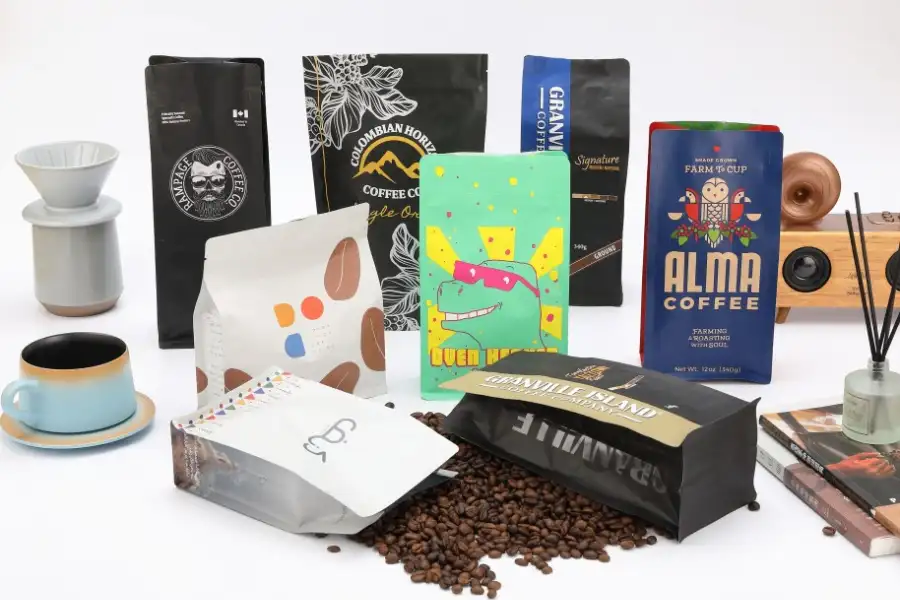
Biodegradable vs Recyclable Coffee Packaging – They are both sustainable alternatives for traditional packaging or single-use plastics. But, the choice will depend on environmental goals, local infrastructure, and consumer behavior. Each option for coffee bags has its own strengths and weaknesses. So, depending on the specific situation, you will know which one will be the better.
Biodegradable packaging will be the better choice in areas with composting facilities. Recyclable packaging will be suitable in regions with well-established recycling programs. Plus, this also depends on the consumer behavior to sort the waste.
But Biodegradable vs. Recyclable coffee packaging – will be the best for a coffee business? They need a strategy to balance cost and sustainability in coffee packaging. The combination of both packages is also an effective method that businesses can apply.
Final Thoughts
So, to decide which is better – Biodegradable vs Recyclable coffee packaging – you should consider some factors. They include location, facilities, and the budget of a business. By understanding their pros and cons, you can be informed which sustainable coffee packaging can align with your commitment. In the end, the best solution might be a mix of them. This will encourage innovation and reduce environmental impact in meaningful ways.

